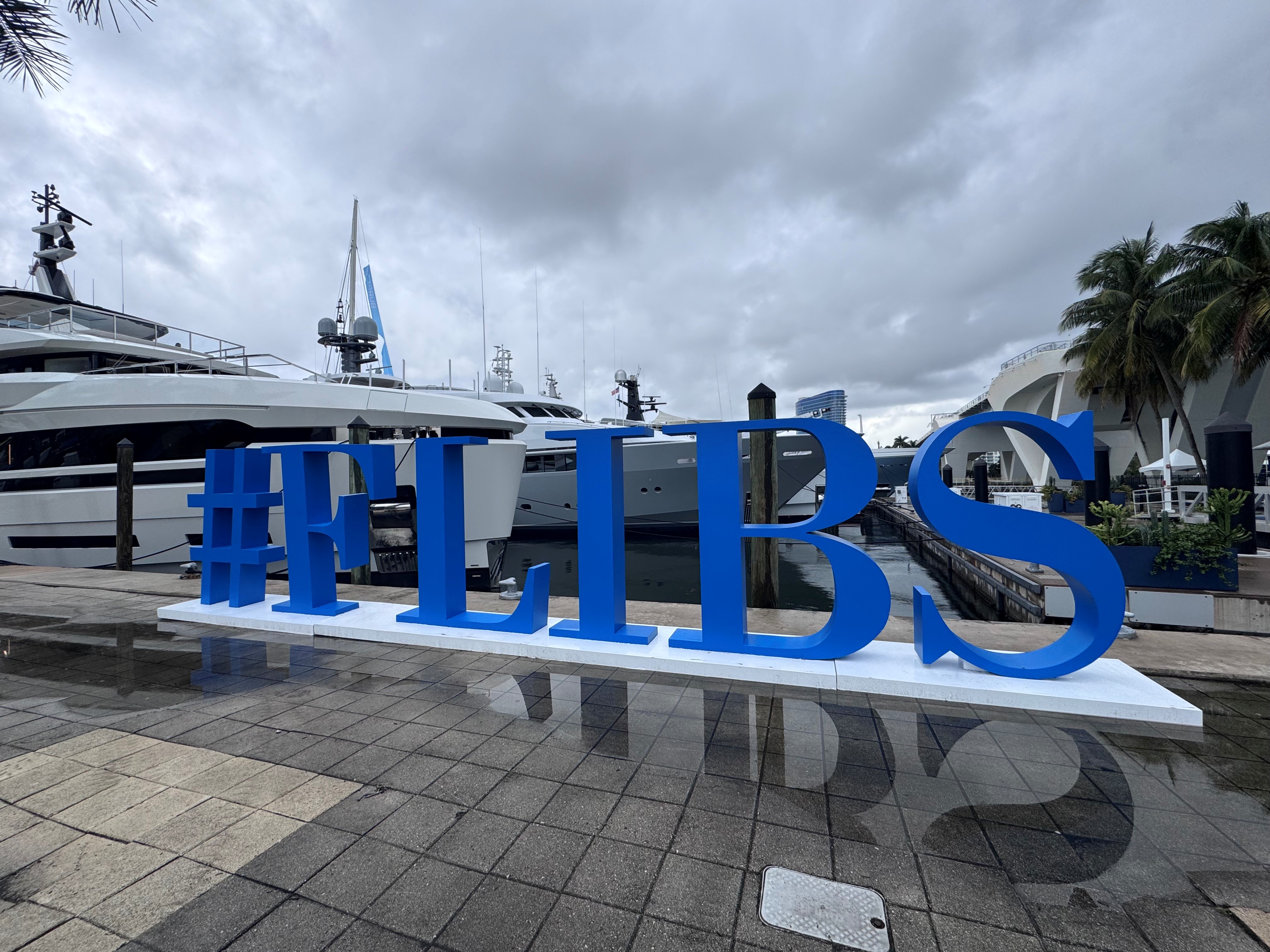WRI Sponsors the Oasis Lounge at 2025 FLIBS
Cara Czech, Meteorologist
WRI was proud to yet again return to the Fort Lauderdale Boat Show last month as a sponsor of the Oasis Lounge, for the sixth time.
The Oasis Lounges, organized by Global Marine Travel, provide a place where captains and crew can take a break from the show. There were two locations again this year, one near the Swimming Hall of Fame and the other at the Superyacht Village, both serving complimentary food and beverages.
This year, myself and colleague Alex Avalos were in attendance. We spent the day prior to the show walking the docks at Bahia Mar, inviting captains and crew to visit the Lounges throughout the show.

Like in previous years, the weekly menu was comprised of a variety of international cuisines each day of the show. Those who attended every day were able to enjoy bake ziti al Forno, yucca fries, smoky BBQ spareribs, and cinnamon-sugar churros, just to name a few dishes throughout the days.
Day one of the show started off with a rainy and overcast sky, but we fortunately lucked out as much of the remaining show days saw mostly clear skies. The following couple days offered much cooler temperatures in the mid-70's, with the beginning of November to bring back some heat in the upper-70's to lower-80's. During the first few days of the show, many of our discussions were about Hurricane Melissa, as the system had just made landfall over Jamaica on the 28th and over Cuba on the 29th.

It was personally my first time attending FLIBS, and it was a pleasurable experience meeting everyone who made the Oasis Lounge possible. This included meeting some crew members of various yachts, and putting a face to the name for a few of our captains that were in attendance. We always appreciate the opportunity to give back to the yachting community as a sponsor of the Oasis Lounge. We hope that you enjoyed the show as much as we did if you attended!